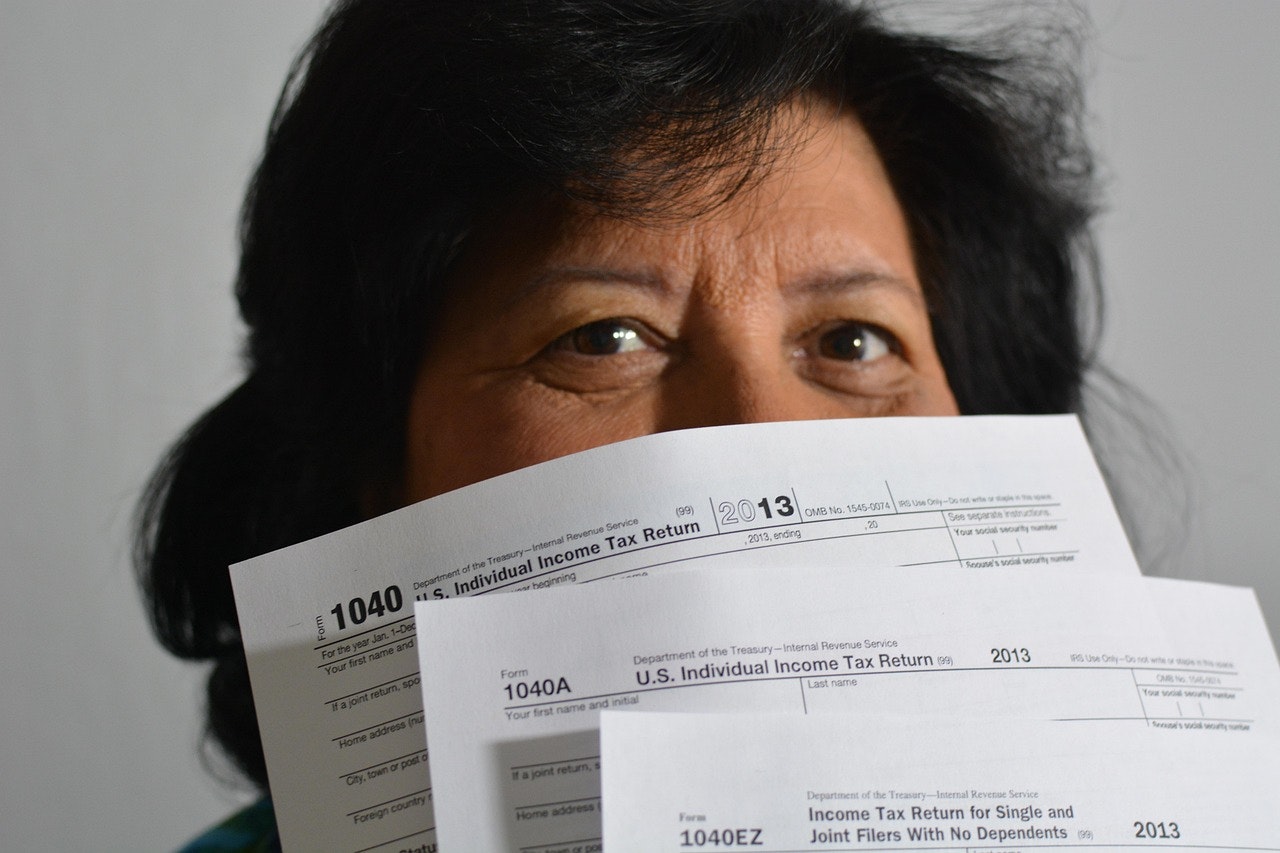What the “One Big, Beautiful Bill” Means for Your Taxes: A Breakdown of the New Federal Tax Law
The new federal tax bill — officially named the "One Big, Beautiful Bill" (OBBBA) — was recently signed into law and brings with it one of the most sweeping tax changes in recent years.
This legislation makes many provisions from the 2017 Tax Cuts and Jobs Act (TCJA) permanent, while also introducing new credits, deductions, and adjustments that affect everyone from employees and families to retirees and small business owners.
If you're wondering how these changes might impact your financial life, here’s a comprehensive look at what’s in the bill — and how to prepare.
✅ Lower Income Tax Rates Made Permanent
One of the most impactful changes in the One Big, Beautiful Bill is the permanent extension of the lower individual tax rates introduced by the 2017 Tax Cuts and Jobs Act (TCJA). These lower brackets were originally set to expire after 2025, but are now locked in for the foreseeable future.
The top marginal tax rate will remain at 37%, rather than reverting to the pre-TCJA rate of 39.6%, and lower income brackets will also retain their more favorable thresholds. In addition, these brackets will continue to be adjusted annually for inflation.
Why this matters: Permanently lower tax rates offer long-term savings potential and stability for individual taxpayers. These rates reduce the overall tax burden for many households and provide more predictability for financial planning.
Example: A family earning $150,000 annually may continue to benefit from lower rates and see more take-home pay compared to what would have occurred under the old pre-2017 tax structure.
✅ Higher Standard Deduction
Another key feature extended under the new law is the nearly doubled standard deduction, first introduced by the TCJA. This deduction reduces taxable income without requiring taxpayers to itemize.
- 2025 Deduction Amounts:
- $15,750 for single filers
- $31,500 for married couples filing jointly
These amounts will continue to increase with inflation each year.
Why this matters: The higher standard deduction makes filing simpler and reduces taxable income for the majority of taxpayers. It particularly benefits those who do not have significant itemized deductions, such as mortgage interest or large charitable donations.
✅ Expanded Child Tax Credit (CTC)
Families with children will see enhanced support through an increased Child Tax Credit beginning in 2025. The maximum credit rises to $2,200 per qualifying child, with $1,700 refundable, meaning families can receive part of the credit even if they owe no tax.
However, beginning in 2026, new requirements apply:
- Families must owe at least $1,700 in federal income tax to claim the full amount.
- The credit phases out for individuals earning over $200,000 and joint filers earning over $400,000.
- A $500 nonrefundable credit remains available for dependents who don’t qualify for the full credit (e.g., older children or elderly parents).
Why this matters: While the increased credit offers substantial help for many families, the minimum tax liability requirement means some low-income families may need to adjust their financial planning to fully benefit.
Planning Tip: Review your income and withholding to ensure you meet the thresholds needed to claim the maximum credit.
✅ New Car Loan Interest Deduction
This newly introduced deduction provides welcome relief for vehicle buyers. Beginning in 2025, taxpayers can deduct up to $10,000 in interest paid on new auto loans — but only if the car was assembled in the United States.
- The deduction phases out above $100,000 in income for single filers and $200,000 for joint filers.
- It will remain available through 2028.
Why this matters: With vehicle prices on the rise, this deduction can offset some of the costs of financing a car, especially for middle-income earners.
Example: A single taxpayer earning $120,000 who purchases a U.S.-assembled car with a standard loan might qualify to deduct $6,000 in interest, reducing their overall tax bill and the effective cost of the vehicle.
✅ Temporary Tip Income Deduction
From 2025 to 2028, workers in tip-heavy industries will benefit from a unique tax break: they can deduct up to $25,000 in reported tip income from their federal taxable income. This is a first-of-its-kind provision recognizing the challenges faced by workers whose earnings depend heavily on gratuities.
Who qualifies?
To be eligible, workers must:
- Have a total income under $150,000 (or $300,000 for joint filers)
- Receive tips that are subject to payroll tax withholding (i.e., tips reported to their employer)
A full list of qualifying occupations is expected from the Treasury Department, but it’s safe to assume it will include servers, bartenders, hairstylists, nail technicians, hotel staff, and others in hospitality or personal care roles.
This deduction could be a significant savings opportunity for individuals who rely on tips as a major part of their compensation. For instance, a restaurant server earning $40,000 in base wages and $20,000 in tips could deduct up to $25,000 of those tips — potentially moving them into a lower tax bracket and saving thousands in taxes.
It’s a valuable acknowledgment of how taxed and unpredictable tip-based income can be, and it provides a well-deserved boost to service industry professionals.
✅ Overtime Pay Deduction and New Rules
Beginning in 2025, the One Big, Beautiful Bill introduces a major change for millions of salaried workers who previously did not qualify for overtime pay. These updates are designed to better compensate employees whose workloads regularly extend beyond 40 hours per week and to recognize the financial strain that long hours can place on lower- and moderate-income earners.
- Salaried employees earning under $50,000 will now be eligible for overtime pay under new federal labor rules, expanding protections that were once limited to hourly employees.
- Employers will need to enhance their systems for tracking time and processing payroll to comply with these new requirements.
- In addition to receiving overtime compensation, qualifying workers will also be able to deduct up to $12,500(or $25,000 for joint filers) of their "time-and-a-half" overtime premium from federal taxable income.
This provision delivers a dual benefit: increased take-home pay for extra hours worked and tax savings on the overtime portion of that income. It's especially helpful for professions such as assistant managers, early-career professionals, or nonprofit staff who frequently put in extra time but previously received no additional pay.
For example, a salaried employee earning $48,000 who consistently works 50-hour weeks could see several thousand dollars in additional wages and reduce their taxable income by a meaningful amount. However, the deduction phases out for those earning above $75,000 (or $150,000 for joint filers), and proper documentation and employer compliance will be critical for claiming this benefit.
✅ SALT Deduction Cap Increased
The controversial State and Local Tax (SALT) deduction cap, which has limited deductions for high-tax state residents since 2018, is finally being eased. Starting in 2025, the cap will increase from $10,000 to $40,000, providing meaningful relief to taxpayers who itemize their deductions.
Why this matters: For individuals and families living in high-tax states such as New York, California, or New Jersey, this increase can translate into significant federal tax savings. However, the expanded deduction begins to phase out for households with incomes above $500,000, limiting its impact for top earners. Still, for many middle- and upper-middle-income taxpayers, the change restores a valuable deduction that had been sharply limited in recent years.
Example: A married couple paying $15,000 in property tax and $25,000 in state income tax could now deduct the full $40,000 instead of being capped at just $10,000 — potentially saving thousands on their federal return.
✅ “Senior Bonus” Deduction
Starting in 2025, a new $6,000 “Senior Bonus” deduction becomes available to Americans aged 65 and older.
- Fully available to individuals with incomes up to $75,000 (or $150,000 for joint filers)
- Phases out gradually for higher earners
Why this matters: This deduction is designed to offer additional tax relief for retirees on fixed incomes. It complements the existing age-based standard deduction boost and recognizes the rising cost of living for older Americans.
Example: A retired couple with $45,000 in combined income and limited deductions could qualify for the standard deduction, senior bonus, and owe little to no federal income tax.
✅ Estate and Gift Tax Exemption Increased Permanently
The new law permanently raises the estate, gift, and generation-skipping transfer tax exemption from $10 million to $15 million per person, adjusted for inflation.
Why this matters: Previously, the exemption was scheduled to revert to around $6–7 million in 2026, which would have exposed many more estates to taxation. By making the higher exemption permanent, individuals have greater certainty for long-term estate planning.
This allows for more proactive use of strategies such as lifetime gifting, trusts, and succession planning — all without the pressure of a looming rollback.
✅ Capital Gains Brackets Adjusted for Inflation
Capital gains tax brackets are now permanently adjusted for inflation.
2025 Brackets:
- 0% rate: Income up to $48,350 (single) or $96,700 (joint)
- 15% rate: Income up to $518,900 (single) or $583,750 (joint)
- 20% rate: Income exceeding those thresholds
Why this matters: Indexing capital gains brackets allows more people to benefit from favorable rates even as their incomes rise with inflation. It also reduces the risk of unintentionally triggering higher taxes when realizing gains.
Tax Planning Opportunity: Consider harvesting long-term capital gains up to the 0% threshold to rebalance your portfolio or fund expenses without owing federal tax.
✅ Alternative Minimum Tax (AMT) Relief Made Permanent
The AMT exemption levels introduced in the 2017 tax reform are now permanent under the new law. However, the phaseout rate for higher earners has increased:
- Previous phaseout rate: 25%
- New phaseout rate: 50%
Why this matters: Most middle-income families are now shielded from the AMT, which was originally intended to target high earners. But the faster phaseout means that high-income households may lose the benefit of the exemption more quickly than before.
⚠️ Major Medicaid Changes
OBBBA includes major reforms to Medicaid that will unfold over the next decade:
- Estimated $1 trillion in federal Medicaid funding cuts
- Work or volunteer requirement: 80 hours/month for able-bodied adult recipients
- More frequent eligibility checks
- Narrowed service and eligibility criteria
Why this matters: These changes could reduce access for some recipients while placing greater administrative burden on states. The impact will vary depending on how each state implements the requirements.
✅ New “Trump Accounts” for Child Savings
Children born in the U.S. between 2025 and 2028 will automatically receive a $1,000 federal deposit into a new tax-advantaged savings account — nicknamed a “Trump Account.” This new federal initiative is designed to jumpstart long-term financial security for the next generation by establishing investment accounts at birth.
- Parents can contribute up to $5,000/year to the account
- Employers may contribute up to $2,500/year tax-free
- Funds are invested in a diversified U.S. stock index fund by default
- Account growth is tax-deferred, and withdrawals will be taxed as income
These accounts differ from 529 college savings plans in that they are not limited to educational expenses. While contributions grow tax-deferred like a traditional IRA, withdrawals are taxable, making them more flexible for general wealth accumulation but slightly less tax-favorable than Roth accounts. However, the employer contribution feature adds a unique incentive, especially for small business owners looking to support employee families.
Why this matters: This program encourages savings from infancy, giving children — particularly from middle-income households — a financial head start. Over time, compound growth on regular contributions could provide funding for education, home purchases, or other major milestones.
Example: A child with $1,000 at birth and $5,000 contributed annually through age 18, invested at an average 7% return, could have over $180,000 by age 30 — a remarkable advantage when entering adulthood.
⚠️ Clean Energy Credits Phased Out
Several existing clean energy tax incentives are being eliminated under the One Big, Beautiful Bill, reflecting a shift in federal priorities away from green energy initiatives and toward broader tax reform goals.
- $7,500 credit for new electric vehicles (EVs) ends after Sept. 30, 2025
- $4,000 credit for used EVs ends the same date
- Residential energy-efficient home improvements(such as solar panels, heat pumps, insulation, windows, and efficient HVAC systems) lose eligibility after Dec. 31, 2025
Why this matters: These credits have made clean energy investments more financially accessible for many Americans. By subsidizing upfront costs, they’ve helped homeowners and car buyers make environmentally conscious decisions. With these programs ending, the window for savings is closing.
If you’re planning to install solar panels, upgrade your home’s insulation, or buy an EV, acting before these credits expire could save you thousands of dollars.
Example: A homeowner installing a $20,000 solar energy system in 2025 could receive a $6,000 tax credit — a benefit that will no longer exist in 2026, significantly increasing the net cost of similar upgrades in the future.
📝 Final Thoughts
The One Big, Beautiful Bill brings sweeping changes that touch nearly every part of the tax code. Whether you're a worker, parent, retiree, investor, or business owner, these updates will likely impact your tax planning.
Now is the time to review your strategy, adjust for the new rules, and take advantage of time-sensitive opportunities before certain benefits expire.
Need help evaluating how the new law affects you? Contact our office to schedule a personalized tax review — we’ll help you navigate the changes and make the most of every opportunity available.

















